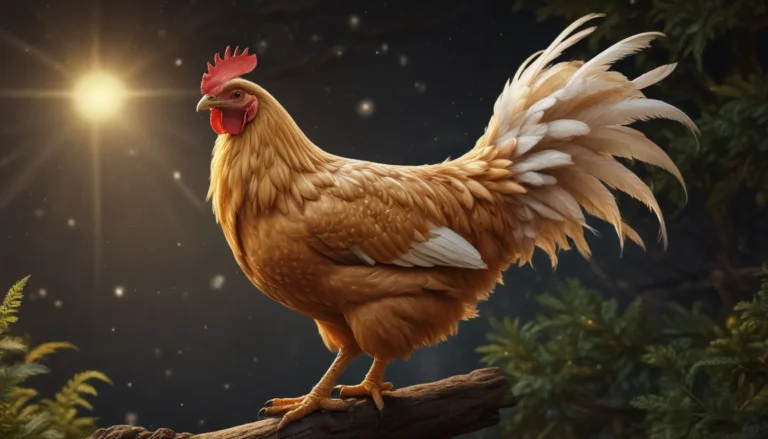The pictures we use in our articles might not show exactly what the words say. We choose these pictures to make you interested in reading more. The pictures work together with the words but don’t take their place. The words still tell you the important facts.
Welcome to the world of the Sichuan takins, fascinating creatures that roam the mountainous regions of Sichuan province in southwestern China. Known for their unique appearance and remarkable abilities, these animals have captivated the interest of wildlife enthusiasts and researchers alike. Join us as we unravel 15 intriguing facts about Sichuan takins, shedding light on their physical traits, behavior, and habitat. Whether you have a passion for wildlife or simply a curiosity about the wonders of the animal kingdom, prepare to be amazed by the enigmatic Sichuan takins.
Unveiling the Mysteries of the Sichuan Takin
- The Sichuan Takin, a unique and robust animal, lives in the mountains of China and plays a crucial role in its ecosystem by dispersing seeds and maintaining balance. Conservation efforts are underway to protect this vulnerable species.
- Sichuan Takins are skilled climbers and swimmers with a keen sense of smell. They are social animals with a distinct appearance and vocalization. Conservation efforts are crucial to safeguard their habitat and ensure their survival.
Magnificent Habitat of the Sichuan Takin
The Sichuan Takin, also known as Budorcas taxicolor tibetana, is a subspecies of the takin, which is the national animal of Bhutan. It thrives in the rugged terrain of the Hengduan Mountains in Sichuan Province, China. Their adaptation to the harsh mountain environment has equipped them with unique survival skills.
Adapting to Extreme Conditions
Due to their habitat in high-altitude mountains, Sichuan Takins have developed several adaptations to thrive in extreme conditions. Their large chest and muscular build allow them to navigate steep slopes and rocky terrains with ease, showcasing their resilience in challenging environments.
The Unique Appearance of Sichuan Takins
With a large and robust body, short legs, and a thick neck, the Sichuan Takin boasts a distinctive appearance that sets it apart from other animals. Both males and females sport long, curved horns that contribute to their overall majestic presence in their mountainous habitat.
Herbivorous Diet and Adaptations
Sichuan Takins are primarily herbivores, consuming a variety of vegetation including grass, leaves, and shrubs. Their specialized digestive system enables them to efficiently extract nutrients from their plant-based diet, ensuring their survival in their rugged environment.
Social Structure of Sichuan Takins
These magnificent creatures exhibit a social hierarchy within their herds, with a dominant male leading the group. Communication through vocalizations and scent marking helps them establish territories and maintain group cohesion, showcasing their intricate social dynamics.
Breeding Behavior of Sichuan Takins
Sichuan Takins undergo a distinct breeding season typically between November and December. During this time, males compete for dominance and access to females through displays of strength and aggression, highlighting their unique reproductive behavior.
Conservation Challenges and Vulnerable Status
Despite their adaptability to mountain environments, Sichuan Takins face various threats such as habitat loss, poaching, and climate change. As a result, they are classified as a vulnerable species by the International Union for Conservation of Nature (IUCN), highlighting the importance of conservation efforts to protect their existence.
Masterful Climbers and Swimmers
With their sturdy build and strong limbs, Sichuan Takins demonstrate impressive climbing abilities, scaling steep cliffs and rocky slopes with ease. Additionally, their exceptional sense of smell aids in detecting potential dangers and locating food sources in their mountainous habitats.
Cultural Symbolism of Sichuan Takins
The Sichuan Takin holds significant cultural importance in China, particularly in the Sichuan Province where it is native. Often depicted in local folklore and traditional arts, it symbolizes strength and resilience, further elevating its status as a revered animal in Chinese culture.
Lifespan and Vocalization of Sichuan Takins
Sichuan Takins have an average lifespan of around 15 to 20 years in the wild, with the potential for a longer life span in captivity. They communicate using various vocalizations, including a deep vocal roar that serves as a means to maintain contact with other members of their herd.
Ecosystem Benefits and Conservation Efforts
Sichuan Takins play a vital role in their mountainous ecosystems by dispersing seeds through their droppings, contributing to the regeneration and growth of vegetation in their habitat. Conservation organizations and local authorities are actively working to protect the Sichuan Takin, combat poaching, and raise awareness about the importance of preserving this unique species.
Embracing the Majesty of the Sichuan Takin
In conclusion, the Sichuan Takin stands as a remarkable creature that symbolizes the diverse and beautiful wildlife found in China. Its adaptability, strength, and unique characteristics make it a species deserving of admiration and protection. Despite facing challenges, conservation efforts are underway to safeguard the Sichuan Takin for generations to come, emphasizing the need to cherish and preserve this extraordinary animal.
FAQs about Sichuan Takins
- What is a Sichuan Takin?
A Sichuan Takin is a large mammal belonging to the bovid family, native to the mountainous regions of China, particularly in Sichuan province.
- What does a Sichuan Takin look like?
Sichuan Takins possess a muscular body covered with dense, woolly fur, a stocky build with a humped back, long face, and curved horns.
- What do Sichuan Takins eat?
They are herbivores, primarily feeding on grasses, leaves, and shrubs, known for their ability to consume tough vegetation, including bark during harsh winter months.
- Are Sichuan Takins endangered?
Yes, Sichuan Takins are listed as vulnerable by the IUCN Red List, facing threats such as habitat loss, poaching, and resource competition.
- How do Sichuan Takins communicate?
Sichuan Takins use vocalizations, including grunts, snorts, and bleating sounds, alongside scent marking and visual displays to communicate with each other.
- How big can Sichuan Takins get?
Adult Sichuan Takins can reach heights of 1.2 to 1.4 meters at the shoulder and weigh between 250 to 400 kilograms.
- Where can I see Sichuan Takins?
The best places to observe Sichuan Takins are in nature reserves and national parks within Sichuan province, offering a suitable habitat for these magnificent creatures.
- What is the average lifespan of Sichuan Takins?
In the wild, Sichuan Takins have an average lifespan of 12 to 15 years but can live up to 20 years or more in captivity.
Trust in our commitment to excellence and authenticity as we bring you compelling insights into the captivating world of Sichuan takins and their significance in the rich tapestry of wildlife.






